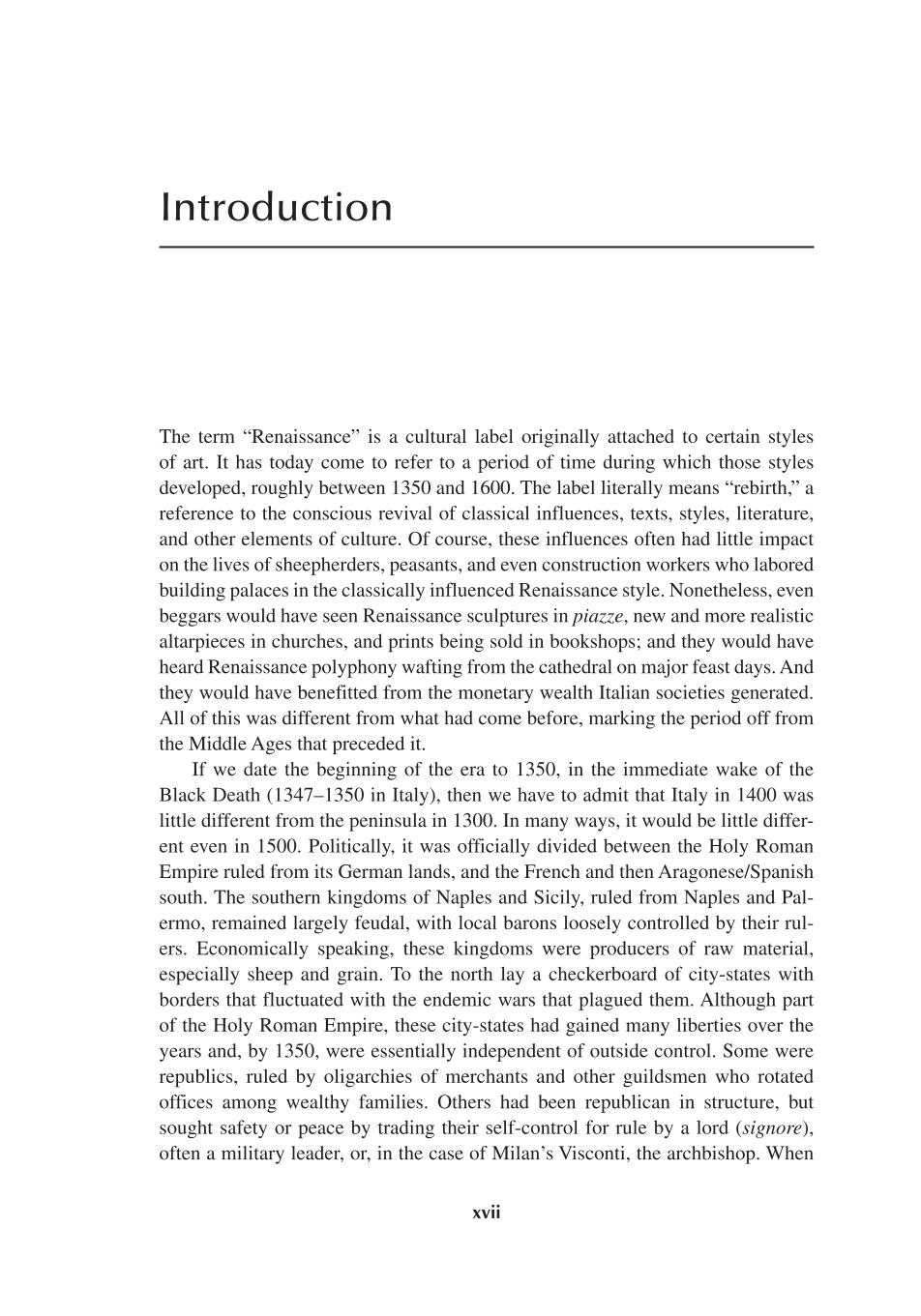xvii
Introduction
The term “Renaissance” is a cultural label originally attached to certain styles
of art. It has today come to refer to a period of time during which those styles
developed, roughly between 1350 and 1600. The label literally means “rebirth,” a
reference to the conscious revival of classical influences, texts, styles, literature,
and other elements of culture. Of course, these influences often had little impact
on the lives of sheepherders, peasants, and even construction workers who labored
building palaces in the classically influenced Renaissance style. Nonetheless, even
beggars would have seen Renaissance sculptures in piazze, new and more realistic
altarpieces in churches, and prints being sold in bookshops; and they would have
heard Renaissance polyphony wafting from the cathedral on major feast days. And
they would have benefitted from the monetary wealth Italian societies generated.
All of this was different from what had come before, marking the period off from
the Middle Ages that preceded it.
If we date the beginning of the era to 1350, in the immediate wake of the
Black Death (1347–1350 in Italy), then we have to admit that Italy in 1400 was
little different from the peninsula in 1300. In many ways, it would be little differ-
ent even in 1500. Politically, it was officially divided between the Holy Roman
Empire ruled from its German lands, and the French and then Aragonese/ Spanish
south. The southern kingdoms of Naples and Sicily, ruled from Naples and Pal-
ermo, remained largely feudal, with local barons loosely controlled by their rul-
ers. Economically speaking, these kingdoms were producers of raw material,
especially sheep and grain. To the north lay a checkerboard of city-states with
borders that fluctuated with the endemic wars that plagued them. Although part
of the Holy Roman Empire, these city-states had gained many liberties over the
years and, by 1350, were essentially independent of outside control. Some were
republics, ruled by oligarchies of merchants and other guildsmen who rotated
offices among wealthy families. Others had been republican in structure, but
sought safety or peace by trading their self-control for rule by a lord (signore),
often a military leader, or, in the case of Milan’s Visconti, the archbishop. When








































































































































































































































































































































































































































































































































































































































































































































































































































































